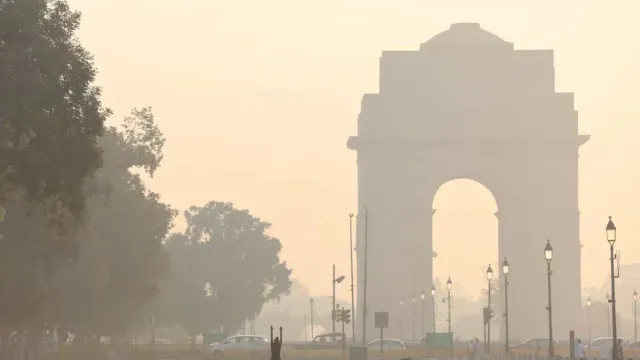- By Shibra Arshad
- Fri, 07 Nov 2025 08:34 AM (IST)
- Source:JND
Delhi AQI News: As winter approaches, Delhi's air quality continues to deteriorate to its worst with every passing day. The national capital recorded an Air Quality Index (AQI) of 312 as of 8 am today, Friday, as per the Central Pollution Control Board (CPCB), placing it in the 'very poor' category.
The index slipped nearly 25 points compared to the number recorded on Thursday at 7 am. The AQI stood at 287 on Thursday at 7 am, although in a disappointing condition, but better than today, as per the notification released by the Central Pollution Control Board (CPCB).
Station-Wise AQI: Anand Vihar Records 332, Punjabi Bagh 343
With deteriorating Air Quality Index (AQI) in Delhi, the Anand Vihar AQI station, often with one of the worst AQI data stations in Delhi, recorded an Air Quality Index of 332, placing it in the 'very poor category' with PM 2.5 being the predominant pollutant.
ITO Delhi AQI: The air quality in the ITO region of the city stood at 337 at 8 am on Friday, remaining 'very poor'.
Several other areas in Delhi also recorded poor to very poor air quality index on Friday, as per the CPCB bulletin released at 8 am, with Dwarka Sector 8 observing 310 AQI in the 'very poor' category. Other stations like IGI Airport stood at 259 in the poor category, Jahangirpuri 342, Jawaharlal Nehru Stadium 296, Lodhi Road-IMD 289, Major Dhyan Chand Stadium 297, Mandir Marg 309, Mundka 335, Najafgarh 265, Narela 335, Nehru Nagar 338.
Punjabi Bagh observed one of the worst AQIs in Delhi at 343, placing it in the very poor category.
ALSO READ: Rajnagar Extension, Loni Among 8 Ghaziabad Areas Marked As Severe Pollution Hotspots | Full List
AQI Category Classification
According to the Central Pollution Control Board, an AQI score between 0-50 is ‘Good’ with minimal impact, 51-100 is ‘Satisfactory’ and may cause slight discomfort to sensitive individuals, 101-200 is ‘Moderate’ and can affect those with lung, heart, or asthma conditions, 201-300 is ‘Poor’ and may cause discomfort to most people on prolonged exposure, 301-400 is ‘Very Poor’ and can trigger respiratory illness, while 401-500 is ‘Severe’, impacting even healthy individuals and posing serious risks to those with existing conditions.

